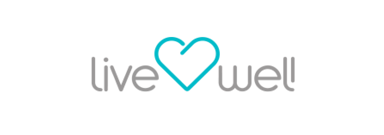Annual Leave
In today's competitive job market, a strong annual leave policy is no longer a perk, it's a necessity.
Annual leave is crucial for employee well-being and organizational productivity. It allows employees to rest, recharge, and maintain a healthy work-life balance, essential for their mental and physical health.
For HR professionals, managing annual leave effectively is essential to ensure smooth operations within an organization. 🏢
What is Annual Leave?
Annual leave, also known as paid time off (PTO), is the period an employee is eligible to take off from work while still receiving their regular salary. It is often provided to help employees rest, recharge, and maintain a healthy work-life balance.
This leave includes time for vacations, personal activities, and sometimes even mental health days. The specifics of annual leave can vary considerably depending on the company policy, country, and employment contract.
Importance of Annual Leave
Annual leave plays a crucial role in maintaining a healthy work-life balance for employees. It allows them to 👇:
- Recharge and de-stress: Taking a break from work helps employees avoid burnout and return feeling refreshed and motivated .
- Improve physical and mental health: Studies show that vacations can lead to lower blood pressure, improved sleep, and reduced stress levels .
- Boost productivity: Employees who take regular breaks tend to be more productive and focused when they are back at work .
- Increase employee satisfaction: A strong annual leave policy shows that employers value their employees' well-being, and leads to higher job satisfaction.
Benefits of Employees Taking Annual Leave
A generous annual leave policy is not only benefiting employee well-being; it also offers a strategic advantage for your organization. 👌
When employees feel supported in taking breaks for rest and relaxation, they're less likely to call in sick due to stress or exhaustion. This creates a more consistent and reliable workforce.
A competitive annual leave policy is a key factor for top talent when considering job offers. By offering generous paid time off to your employees, you can attract and retain the best and brightest.
Encouraging employees to disconnect and recharge creates a positive and supportive work environment. This builds trust, loyalty, and a sense of belonging, and leads to a more engaged and productive workforce.
Average Holiday Entitlement
The amount of annual leave an employee receives can change depending on several factors, including 📌:
- Location: Minimum leave requirements are often assigned by regional regulations.
- Industry: Some industries may offer more generous leave policies than others.
- Company policy: Organizations can choose to offer more leave than the legal minimum.
- Employee tenure: Many companies offer increased leave allowances with longer service.
However, a common benchmark is:
Compared to other regions, the United States offers less paid time off, with an average of 10 days per year for full-time employees. In contrast, the European Union mandates a minimum of 20 days, with some countries exceeding that number. Australia typically grants full-time employees 4 weeks of annual leave that accrues throughout the year.
How to Create a Leave Policy
A well-defined leave policy is crucial for ensuring transparency and fairness in managing employee time off. Here are the key steps to create your policy:
- Understand Legal Requirements: Secure compliance with local labor laws and regulations. This includes understanding minimum leave entitlements and any specific conditions related to leave.
- Define Entitlements: Clearly state the amount of leave employees are entitled to, taking into account different job roles, tenures, and employment contracts.
- Establish Procedures: Outline the process for requesting and approving leave. This should include timelines for submitting leave requests and the steps involved in the approval process.
- Communicate Policy: Make sure that all employees are aware of the policy details. This can be achieved through employee handbooks, company intranets, and regular training sessions.
- Blackout Periods: If applicable, specify any periods when leave requests may be restricted.
Leave Policy Document Template
While specific details will differ, a leave policy document should typically include the following sections👇:
- Introduction: A brief overview of the purpose and scope of the policy.
- Leave entitlements: Clear explanations of leave amounts and accrual processes.
- Types of leave: Definitions of different types of leave (e.g., annual leave, sick leave, personal leave).
- Leave request and approval process: Step-by-step instructions on requesting and approving leave.
- Carry-over and expiration: Rules about unused leave and any expiration dates.
- Leave cancellation: Guidelines for canceling approved leave requests.
- Manager responsibilities: Expectations for managers in handling leave requests.
- Employee responsibilities: Employees' obligations regarding requesting and taking leave.
- Compliance: A statement confirming adherence to relevant local regulations.
Sample Leave Policy
[Company Name]'s Leave Policy
This policy provides paid time off for full-time and part-time employees (annual leave, personal leave - limited). Details on sick leave can be found in a separate policy.
Leave Accrual:
- Full-time: [X] days per year (based on hours worked)
- Part-time: Proportional to work schedule
Leave Requests:
- Submit electronically at least [X] days in advance (except emergencies).
- Managers review and approve based on workload.
Carry-over:
- Unused annual leave carries over to the next year (max [X] days). Excess is forfeited.
Leave Cancellation:
- Notify the manager ASAP if you need to cancel an approved leave.
Blackout Periods:
- Leave requests may be restricted during peak business times (communicated in advance).
Manager & Employee Responsibilities:
- Managers: Review leave requests, ensure staffing coverage, and communicate restrictions.
- Employees: Submit requests on time, notify of cancellations, and ensure work is covered during absences.
Compliance:
This policy adheres to all relevant leave regulations.
How to Calculate Annual Leave
There are three main methods for calculating annual leave entitlements ⚖️:
1. Accrual System
In the accrual system, employees earn leave progressively based on the number of days worked. For example, an employee might accrue 1 day of leave for every month worked.
2. Lump Sum Allocation
Employees receive their entire leave entitlement at the start of the leave year. This approach can simplify planning for both employees and employers.
3. Anniversary System
With the anniversary system, leave is assigned based on the employee's work anniversary. Each year on their employment anniversary, employees receive a new allocation of leave days.
Annual Leave vs. Vacation
The terms "annual leave" and "vacation" are often used interchangeably, but there's a small distinction.
Annual leave is a broader category including all paid time off employees earn, like vacation days, personal days, and sometimes even public holidays. It's often synonymous with PTO (Paid Time Off).
On the other hand, vacation specifically refers to time allotted for leisure and relaxation, a subsection of the overall annual leave package.
Annual Leave vs. Sick Leave
Annual leave and sick leave are distinct types of leave with different purposes:
- Annual leave: Used for rest, relaxation, or personal needs.
- Sick leave: Taken when an employee is unable to work due to illness or injury. Sick leave is generally taken as needed and may require a doctor's note.
HR Best Practices for Annual Leave Policies
Here are some key best practices for HR professionals when developing an annual leave policy 👩💻:
- Compliance: Make sure that your policy adheres to all minimum leave requirements mandated by local regulations.
- Clarity and transparency: Use clear language to avoid confusion regarding leave entitlements and procedures.
- Fairness and consistency: Apply the policy consistently across all employees in the same category.
- Flexibility: Allow for adjustments based on individual circumstances. For example, offering additional leave for long-tenured employees or those with significant life events.
- Technology utilization: Use leave management software to streamline leave requests, track balances, and generate reports.
- Consult Employees: Collect input from staff to make sure that the policy meets their needs and preferences. Employee feedback can provide valuable insights into how to structure the policy effectively.
- Benchmarking: Compare with industry standards to remain competitive in attracting and retaining talent. Knowing what other companies offer can help ensure your policy is competitive.
Setting Clear Annual Leave Entitlements
There are two main approaches to setting leave entitlements 👇:
Accrual vs. Fixed Leave Allocation
Decide whether the leave is accrual (earned over time) or given as a lump sum at the beginning of the year (fixed allocation).
Job Level, Tenure, or Collective Bargaining Agreements
Adjust entitlements based on employee status. Senior employees or those covered by specific agreements might receive different leave amounts.
Managing Annual Leave Requests
Here are some strategies for effectively managing employee leave requests 🙌:
- Streamline Approval Processes: Implement online leave request systems or clear approval workflows to expedite the process.
- Ensure Fair and Consistent Leave Distribution: Encourage employees to take leave throughout the year to avoid last-minute requests and staffing shortages. Consider implementing a scheduling system for leave requests.
- Address Staffing Shortages During Peak Leave Periods: Plan ahead by encouraging staggered leave schedules or cross-training employees to cover for absences during busy times.
Tracking and Monitoring Annual Leave Balances
- Utilize leave management software: Automate leave tracking for efficiency and accuracy.
- Generate comprehensive reports: Ensure accurate leave accruals and compliance with regulations.
- Identify potential issues: Use reports to spot patterns, such as employees not taking full leave entitlement, which may indicate burnout or heavy workload.
Legal Considerations Around Annual Leave
- Minimum Leave Requirements by Region: Research all local or national regulations regarding minimum leave entitlements.
- Sick Leave vs. Annual Leave Regulations: Understand the legal distinctions between sick leave and annual leave to secure proper application of each policy.
- Payout During Leave or Termination: Establish clear guidelines regarding payment for unused leave upon termination or during periods of leave.
Utilizing an ATS for Annual Leave Management
- Automate Leave Requests and Approvals: An ATS automates leave requests and approvals, making it easy for employees to submit and for managers to approve applications quickly, reducing paperwork and errors.
- Real-Time Leave Balances: Employees can check their leave balances in real-time, helping them plan better and reducing HR demands.
- Seamless Integration with Payroll: An ATS integrates with payroll systems, ensuring accurate reflection of leave data in paychecks, reducing administrative workload and errors.
- Comprehensive Reporting and Compliance: Generate detailed reports on leave usage and ensure compliance with legal requirements effortlessly.
- Improve Employee Satisfaction: Simplifying leave management enhances the employee experience, leading to higher satisfaction and engagement.
Incorporating an ATS ensures a smooth and efficient annual leave process, benefiting both employees and HR professionals. Hirex offers strong leave management features to systematize annual leave processes.
Understanding annual leave is essential for maintaining a happy, healthy, and productive workforce. Through implementing a well-structured leave policy, HR professionals can ensure employees enjoy their time off while keeping the organization running smoothly. A comprehensive leave policy not only benefits employees but also enhances overall organizational efficiency and morale. 🌟
Get a demo
- Quickly find top candidates with smart application management
- Improve team collaboration using built-in communication and workflows
- Offer a smooth candidate experience to strengthen your employer brand
- Count on 24/7 support for a hassle-free hiring process
- Quickly find top candidates with smart application management
- Improve team collaboration using built-in communication and workflows
- Offer a smooth candidate experience to strengthen your employer brand
- Count on 24/7 support for a hassle-free hiring process
"We truly felt the speed difference. Everything was smoother, and candidate feedback was much more positive. It made our jobs easier."

Trusted by 100+ teams
Get Informed,F.A.Q.
Revolutionize your hiring process with our transformative Applicant Tracking System (ATS.)
Suggested keywords
What is Cultural Fit?
Let's talk numbers - 89% of employers put cultural fit at the top of their hiring checklist. Pretty huge. But wait a second... what exactly does cultural fit mean in today's fast-moving workplace?The ...
Employee NPS Benchmarks
An Employee NPS benchmark is basically a way to see how your company’s employee satisfaction stacks up against others. It helps turn your eNPS score into something useful by giving it context. 📌You'r...
Salary Benchmarking
Salary benchmarking is basically figuring out if what you're paying your team makes sense compared to what others are offering for similar roles. It’s like checking the going rate before you buy somet...















